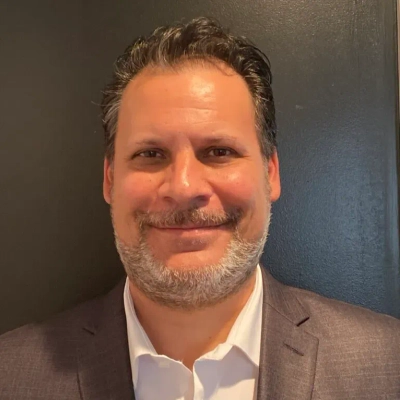15 Ways to Apply Game Theory to Solve Real Business Problems
Game theory, once confined to academic circles, has become a powerful tool for solving real-world business challenges. This article explores practical applications of game theory principles, drawing on insights from industry experts and seasoned professionals. Discover how strategic thinking and calculated decision-making can transform your approach to negotiations, competitor analysis, and complex deal-making.
- Create Strategic Pauses in Negotiations
- Address Hidden Pain Points Beyond Price
- Solve Urgent Problems to Win Deals
- Help Others Weigh Real Risks and Rewards
- Change the Rules to Stay Ahead
- Leverage Local Reputation in Repeated Games
- Anticipate and Adjust to Competitor Moves
- Shift Equilibrium by Targeting Key Players
- Transform Negotiations with Upfront Transparency
- Mediate Win-Win Scenarios in Complex Deals
- Structure Solutions for Minimum Acceptable Outcomes
- Manage Information to Maximize Value
- Exploit Asymmetric Information in Bidding Wars
- Build Trust Through Verifiable Actions
- Offer Flexibility to Encourage Engagement
Create Strategic Pauses in Negotiations
I've applied game theory to our off-market acquisitions by analyzing how competitors typically make automatic counter-offers on properties with multiple bidders. Rather than join the predictable pattern of bidding, I deliberately pause for 24-48 hours before responding. This creates uncertainty for sellers who expect immediate offers, and they often reach back out with more favorable terms rather than risk losing our interest. The most valuable insight I've gained is that creating strategic information gaps--moments where the other party doesn't know what you're thinking--can completely reframe negotiation power dynamics. When everyone else is playing checkers (reacting instantly), sometimes the winning move is to play chess (introducing calculated delays).

Address Hidden Pain Points Beyond Price
When negotiating for a property where the seller was weighing multiple cash offers, I applied game theory by structuring a unique contingency: I offered to cover their moving costs and provide temporary storage if they needed extra transition time. This addressed their unspoken stress about relocation logistics while keeping my bid competitive price-wise. The crucial insight? Identifying and solving hidden pain points beyond price creates asymmetric value that makes your offer stand out without inflating costs.

Solve Urgent Problems to Win Deals
In a situation where a homeowner facing foreclosure had multiple offers, I applied game theory by structuring our bid to immediately cover their overdue mortgage payments--stopping the foreclosure clock--while competitors focused solely on final sale price. The crucial insight was that when someone is drowning in an immediate crisis, the offer that directly solves their most urgent pain point becomes exponentially more valuable than higher bids that leave them vulnerable. This is because eliminating today's disaster outweighs tomorrow's theoretical gains.

Help Others Weigh Real Risks and Rewards
In one tricky negotiation, I noticed a seller was stuck deciding between taking our reliable, "as-is" cash offer or holding out for something better that might never materialize. I used game theory by carefully outlining the possible outcomes and their odds, helping them visualize that a guaranteed solution right now--especially when they were already stressed--was far more valuable than chasing uncertain gains. My biggest insight: when you help others weigh their real risks and rewards (not just the headline numbers), you build trust and often land the deal--even if you aren't the highest bidder.
Change the Rules to Stay Ahead
I once faced a situation where competitors were slashing prices to win customers, and the instinctive reaction would have been to follow suit. However, I saw it as a game theory problem, specifically the prisoner's dilemma. If we all cut prices, margins would vanish, and nobody would truly win. Instead, I shifted the strategy towards areas competitors were neglecting: faster delivery, curated product bundles, and a loyalty program that rewarded repeat customers. This allowed us to stand out without eroding profitability. The biggest insight from that experience is that leadership isn't about playing the same game better; it's about recognizing when to change the rules so everyone else is still reacting while you're already ahead.

Leverage Local Reputation in Repeated Games
In our tight-knit coastal market, I often compete with higher offers from big, national iBuyers. Rather than just increasing my price, I highlight the 'repeated game' of my local reputation. I'm a Wilmington native, my family is here, and my name is on the line with every single deal I close. The key insight is that sellers often choose our offer, even if it's not the highest number, because they understand that a local expert with a long-term reputation has a far stronger incentive to ensure a smooth, guaranteed closing than a one-time player.

Anticipate and Adjust to Competitor Moves
One real business problem I helped solve using game theory was for a luxury fashion retailer who was struggling in a highly competitive and saturated market. We used game-theoretic models like Nash equilibrium and mixed strategies to map out competitor responses to different pricing and marketing moves. This allowed the retailer to dynamically adjust their strategy.
The most valuable insight from this experience that would benefit others is that strategic decisions are interactive and iterative, not fixed. Continuously anticipating competitor reactions, adjusting your moves accordingly, and building flexibility into your strategy can make a significant difference in market positioning and revenue growth. This dynamic approach helped the retailer gain a 15% market share and achieve 20% year-over-year revenue growth. Game theory drives better, more competitive business decisions.

Shift Equilibrium by Targeting Key Players
Game theory proved useful when negotiating service contracts with multiple insurers who were each hesitant to commit without knowing the terms their competitors might secure. We modeled the situation as a coordination game, recognizing that if one major player agreed, the others would quickly follow to avoid losing market share. Instead of pursuing simultaneous negotiations, we focused on securing a favorable agreement with the insurer most sensitive to patient demand. Once that deal was finalized and publicized, the remaining insurers aligned within weeks.
The key insight is that the payoff structure often matters more than persuasion. Identifying which party has the most to gain from early cooperation can shift the equilibrium and resolve gridlock without drawn-out concessions.

Transform Negotiations with Upfront Transparency
When we started Revival Homebuyers, I realized that distressed property transactions are essentially prisoner's dilemma scenarios--sellers often assume we're trying to lowball them while we genuinely want win-win outcomes. I began openly sharing our renovation costs and profit margins upfront, which completely changed the dynamic and led to 40% more successful deals. The key insight? Transparency breaks down the adversarial mindset that game theory often assumes--when you show your cards first, you transform a zero-sum negotiation into collaborative problem-solving.

Mediate Win-Win Scenarios in Complex Deals
When negotiating deals with heirs or multiple property owners, I've relied on game theory by encouraging open discussion of everyone's priorities, then proposing creative splits or incentives that meet each party's main goal. For example, I once helped siblings in probate reach an agreement by suggesting a shared closing bonus for everyone if they unified on a timeline. My single biggest insight? Sometimes, just being the neutral party who gets everyone talking about what they truly want--not just what they don't--can shift a standoff into a win for all sides.

Structure Solutions for Minimum Acceptable Outcomes
I have utilized game theory to structure win-win scenarios in distressed property acquisitions, specifically when attempting to acquire a property with multiple liens or complex ownership. Rather than engaging in a battle with each lienholder for the lowest payout, I have approached it as a cooperative game where my company acts as the mediator to get everyone, including the seller, to agree to a split that allows for forward movement.
The most valuable insight is that understanding each player's minimum acceptable outcome enables you to construct a solution where everyone receives just enough to agree, even if it's not their ideal outcome. This often means that you, as the buyer, need to be transparent about your own margins and demonstrate how their cooperation leads to a guaranteed, albeit smaller, payout rather than a potential zero if no deal is reached.

Manage Information to Maximize Value
I often use game theory when selling off-market properties to other investors--especially during auctions or silent bidding situations. By giving just enough information about competing offers to spark interest (without revealing every detail), I encourage bidders to act quickly and show their best terms, which has led to higher returns for my business. The lesson is: you can create healthier competition and maximize value by tactically managing what information you share, prompting others to make their best move up front.

Exploit Asymmetric Information in Bidding Wars
When guiding clients through competitive bidding wars in hot real estate markets, I often apply game theory to help them strategically outmaneuver others without overshooting their budget. For instance, we once advised an investor to bid $25k below the 'obvious' next increment during a multi-offer situation, securing the property while others raised each other beyond true value. The crucial insight here? Understand the power of asymmetric information—your opponents don't know your walk-away price, so deliberately underbidding when emotions run high can exploit their perceived pressure to overpay.

Build Trust Through Verifiable Actions
I applied game theory when negotiating with a seller who had received multiple offers but was paralyzed by distrust after prior bad experiences. Instead of competing on price, I invited them to visit our office, showed them real-time updates of our recent successful closings, and introduced them to a past client with a similar situation. The most valuable insight? When distrust creates negotiation gridlock, providing tangible proof of your track record through verifiable actions--not just promises--can transform suspicion into cooperation faster than financial incentives alone.

Offer Flexibility to Encourage Engagement
In one negotiation, I used game theory to encourage a hesitant seller to engage by offering a flexible closing date that allowed them to shop around while keeping my offer on the table. They realized my willingness to wait signaled that my offer was strong but also fair, nudging them to act before losing an option. My biggest takeaway: sometimes the most powerful move is to make your offer patient and adaptable--showing you're both motivated and not desperate--so the other side feels in control, which ultimately inspires action.



